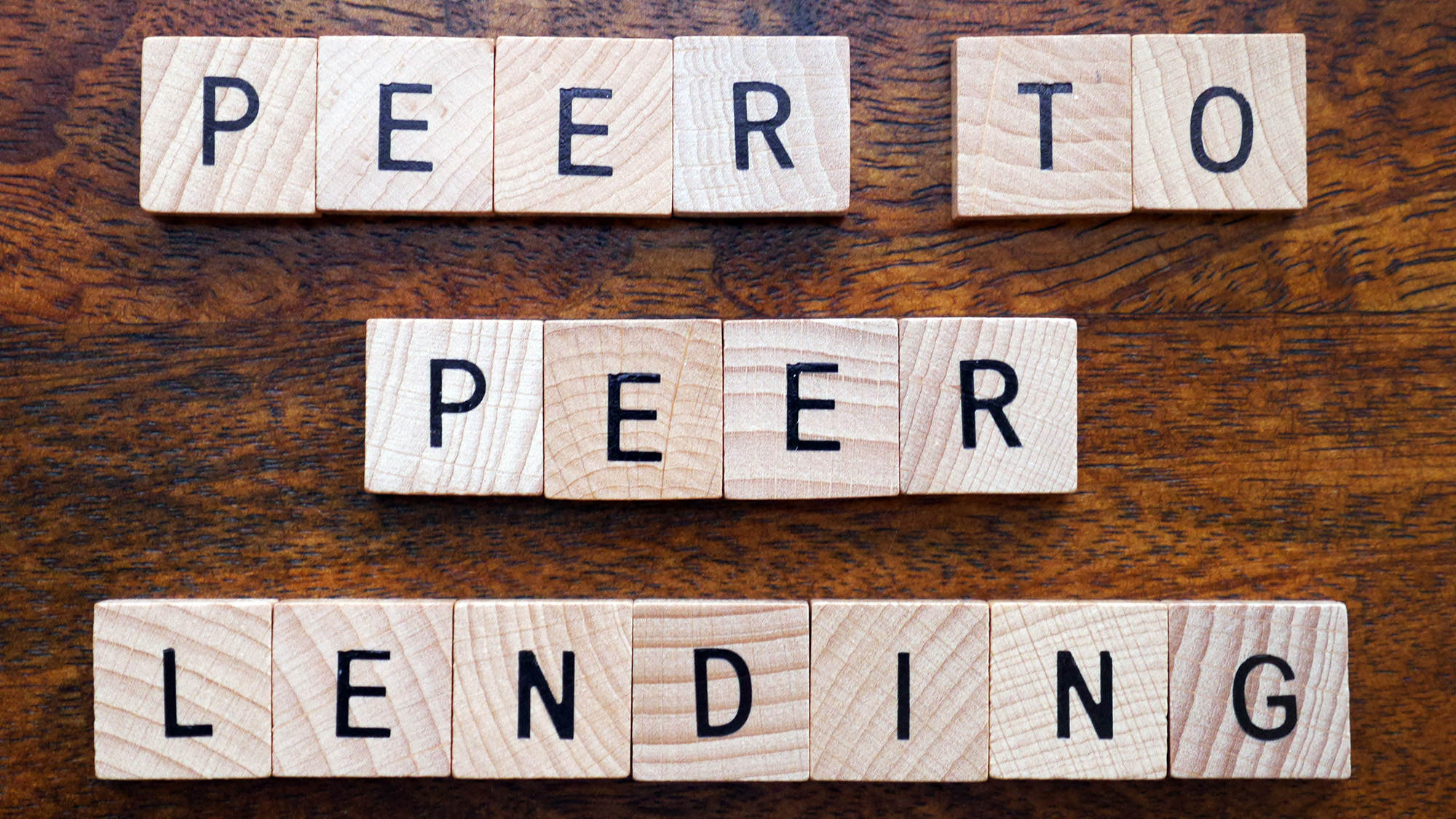Peer-to-Peer Lending - Navigating The Borrowing Landscape
Peer-to-peer lending has become an influence in the ever-changing financial landscape, changing the way that both individuals and businesses can obtain loans. With the help of this creative financial model, lenders and borrowers can communicate directly without the use of conventional banking middlemen.
Author:James PierceReviewer:Camilo WoodJan 13, 202442 Shares20.7K Views

Peer-to-peer lendinghas become an influence in the ever-changing financial landscape, changing the way that both individuals and businesses can obtain loans. With the help of this creative financial model, lenders and borrowers can communicate directly without the use of conventional banking middlemen.
As we explore the nuances of peer-to-peer lending, we set out to discover how this decentralized method is transforming financial inclusion, opening up new channels for loan seekers, and redefining access to finance. Come along as we explore the fundamentals, advantages, and drawbacks of peer-to-peer lending and see how it affects how we invest and borrow money.
What Is Peer-To-Peer Lending?
Peer-to-peer lending involves the direct lending of money to individuals or businesses without the involvement of traditional financial institutions as intermediaries. This type of lending typically occurs through online platforms that connect lenders with potential borrowers.
Both secured and unsecured loans are available through P2P lending, although the majority of loans are unsecured personal loans. Secured loans in P2P lending are uncommon and typically backed by high-value assets, like luxury goods. Peer-to-peer lending is recognized as an alternative financing option, offering unique characteristics that set it apart from traditional lending channels.
Understanding Peer-To-Peer Lending
Peer-to-peer lending platforms serve as intermediaries connecting borrowers directly with lenders. These websites establish interest rates and terms, facilitating the entire transaction process. Interest rates often vary based on the creditworthiness of the borrower.
To participate, an investor opens an account on the platform and deposits a specified amount of money, which is then distributed across various loans. Borrowers create financial profiles, categorized by risk, to determine the applicable interest rate.
After posting their loan request, applicants can review and accept offers, sometimes dividing their requests among multiple lenders. The platform manages the money transfer and monthly payments, offering the flexibility of automated processes or allowing negotiations between lenders and borrowers.
Specialized platforms cater to specific borrower categories; for instance, Funding Circle focuses on small businesses, while Lending Club features a "Patient Solutions" category connecting doctors offering financing programs with potential patients.
History Of Peer-To-Peer (P2P) Lending
Initially, the P2P lending system was recognized for providing credit access to individuals rejected by traditional institutions and offering a means to consolidate student loan debt at more favorable rates.
In recent years, P2P lending platforms have broadened their scope. Many now target consumers seeking to pay off credit card debt at reduced interest rates, in addition to offering options for home improvement loans and auto financing.
Interest rates for applicants with good credit are often lower compared to conventional bank rates, whereas those with less favorable credit records may encounter higher rates. As of December 4, 2023, LendingTree.com displayed personal loan rates ranging from 6.40% to 36%. In contrast, the average credit card interest rate stood at 21.19% as of December 7, 2023, according to the Federal Reserve.
P2P lending gives lenders a way to earn interest on their cash at rates higher than those available from conventional savings accounts or certificates of deposit (CDs).
Special Considerations
Individuals looking to lend money through a P2P lending platform must acknowledge the risk of potential borrower defaults, a concern shared with traditional banks. Research on P2P lending platforms has revealed that default rates can be notably higher, occasionally exceeding 10%.
In contrast, the Federal Reserve's data on delinquency rates for all loans at commercial banks demonstrates a decline from approximately 3.76% to 1.32% over the decade leading up to December 2023.
Prospective consumers or investors considering P2P lending should also carefully assess transaction fees. While revenue models vary among platforms, fees, and commissions might be applied to the lender, the borrower, or both. Like traditional banks, P2P lending sites may impose charges such as loan origination fees, late fees, and bounced-payment fees.
Types Of Peer-To-Peer Loans
P2P loans typically range up to $40,000, with some platforms offering higher amounts. There are three primary types of P2P loans:
Personal Loans
Borrowers use these loans for various purposes, such as medical bills, automobile purchases, home improvements, and debt consolidation. Social lending groups often provide easier access to these loans as they come with fewer restrictions compared to traditional financial institutions.
Business Loans
Designed to cover start-up costs like marketing, facility maintenance, repair, or expenses related to launching new products. Social lending groups are an attractive option for business loans because borrowers can present their proposals to multiple lenders, increasing the likelihood of approval.
Student/Educational Loans
Typically, lump-sum loans provide borrowers with discretion on how to allocate funds for school-related expenses. While it's advisable to explore federal student aid options first, social lending groups can offer competitive rates for student loans.
It's essential to note that state restrictions may apply. While P2P loans often cross state lines, not all platforms are available in every location. For example, Lending Club loans are not accessible in Iowa and Idaho, and Prosper loans cannot be made to residents in Iowa, Maine, and North Dakota.
However, options are generally available in all states except Iowa. To get specific details, individuals should check the websites of major P2P lenders.
Borrowing Tips
Here are essential tips for potential borrowers to enhance their chances of securing the desired loan:
- Self-honesty matters - Assess yourself from a lender's perspective. Convince the lender of your ability to repay by presenting evidence and emphasizing your creditworthiness.
- Transparency with the lender - Avoid misleading information or lies. Word spreads in the online lending community, so maintaining honesty is crucial. If you have a history of financial or credit challenges, be upfront about it. Transparency is more beneficial than building a reputation for deceit.
- Clearly articulate your plan - Provide a clear explanation of how you intend to use the loan proceeds. Avoid vague statements and explicitly state the purpose. Lenders prefer clear and detailed plans over ambiguity.
- Attention to detail - Proofread your application to ensure correct grammar and spelling. A well-drafted, error-free application reflects conscientiousness. Lenders seek trust in borrowers, and presenting a polished application contributes to that trust.
- Realistic requests - Consider your debt-to-income ratio, as lenders evaluate this before approving a loan. If your application lacks a favorable income stream or credit history for repayment, the likelihood of approval diminishes. Make realistic requests that align with your financial situation.
Major P2P Lending Sites
Lending Club
Lending Club stands as the largest peer-to-peer (P2P) lending platform, predominantly specializing in personal loans with a maximum limit of $35,000. In addition to personal loans, it also facilitates business and medical loans that fall outside the purview of insurance coverage.
These loans are unsecured, carrying fixed interest rates. The repayment terms span from 24 to 60 months, ensuring full debt settlement within that timeframe. The annual percentage rates (APRs) on these loans vary, ranging from a low of 5.24% to a peak of 31.7%.
For its services, Lending Club imposes an origination fee, which falls within the bracket of 1% to 5% of the loan amount. Notably, the platform does not levy application fees, and borrowers are not subjected to prepayment penalties.
Prosper
Prosper, in existence since 2005, has facilitated loans totaling nearly $12 billion. Boasting a community of over 2 million members, Prosper specializes in providing personal loans with an upper limit of $35,000.
The repayment terms offered range from 36 to 60 months, featuring fixed interest rates spanning from 5.99% APR to 36.00%. Origination fees on Prosper loans fall within the range of 1% to 5%.
SoFi
SoFi, short for Social Finance, specializes primarily in student loan refinancing while also offering personal loans and mortgages. The platform provides fixed-rate loans with interest rates ranging from 3.5% to 7.49% and variable-rate loans with rates between 2.13% and 5.68%. Loan amounts extend up to $100,000, and SoFi claims that the average customer saves $14,000 by refinancing their student loans through their website.
Diverging from other platforms, SoFi's lending criteria heavily weigh educational and career prospects. Factors such as your GPA, the institution where you obtained your degree, and your income potential play crucial roles. Consequently, individuals who faced academic challenges, such as flunking out of community college, might find their loan applications less likely to be successful.
Funding Circle
Small business loans are a market segment that conventional lenders typically ignore, but Funding Circle specializes in serving this niche. With a track record of extending over $2 billion in loans to 12,000 small businesses globally, Funding Circle requires businesses to have a minimum of six months of operational history to be eligible for application.
Businesses seeking financing can apply for loan amounts ranging from $25,000 to $500,000, with interest rates falling between 5.49% and 20.99%. The loans come with fixed terms spanning from one to five years. Notably, there is a 4.99% origination fee applied to the loan amount.
Peerform
Peerform specializes in serving borrowers with lower credit qualifications, extending personal or business loans to individuals who may not meet the typical credit score requirements imposed by other lending platforms. Unlike most sites that demand scores in the mid-600s, Peerform accommodates borrowers with credit scores as low as 600.
Loan amounts on Peerform range from $1,000 to $25,000, with interest rates spanning from 7.12% to 29.99%. The origination fee falls within the range of 1% to 5% of the loan amount. Notably, these loans are unsecured, meaning no collateral is required as a prerequisite for borrowing.
Upstart
Founded in 2012, Upstart diverges from conventional lending models by placing significant emphasis on borrowing qualifications beyond the FICO score. Similar to SoFi, Upstart factors in academic performance, field of study, work history, and potential earnings when evaluating loan applications.
Upstart offers loans within the range of $3,000 to $35,000, with interest rates averaging around 15% for a three-year loan. However, the rates can vary, spanning from 4% to 26%.
An origination fee is applied to the loan amount, ranging from 1% to 6%. This approach reflects Upstart's commitment to considering a broader spectrum of factors in assessing a borrower's creditworthiness.
Benefits Of Peer To Peer Lending
P2P lending offers a crucial advantage by providing accessible funding, particularly for individuals and small businesses facing challenges in securing loans from traditional financial institutions. Affordability is another noteworthy benefit, as P2P lending often offers lower interest rates compared to traditional loan options.
Flexibility is a key feature of P2P lending, allowing borrowers to tailor loan amounts and repayment options to suit their specific needs. This personalized approach enhances the borrowing experience. Investors can also benefit by diversifying their portfolios across various loans with different risk levels, while P2P platforms maintain transparency in displaying fees, interest rates, and borrower information.
Beyond these advantages, P2P lending has revolutionized the loan application process with swift approvals and disbursements. The online application system eliminates the need for physical visits to branches or extensive paperwork, making the entire process faster and more convenient compared to traditional banking methods.
Pros And Cons Of P2P Lending
To begin, applying is as simple as staying at home. No in-person meetings with bank officials are required, sparing individuals from the scrutiny of having their financial details meticulously reviewed.
Pros
Investors will have access to your loan request without personally identifying you. This online process allows P2P loans to serve various purposes, acting as substitutes for second mortgages, home equity credit lines, or conventional bank loans.
The entire procedure, spanning from application to fund receipt, can be completed in as little as two or three days, a significant contrast to the weeks or even months typically associated with traditional loans.
P2P loans typically feature competitive interest rates and fixed monthly payments. Importantly, the application process does not impact your credit score, and credit requirements may be less stringent compared to traditional lending institutions.
Cons
The primary risk for individuals engaging in P2P lending lies on the lending side, particularly if the borrower defaults. Managing the collection process becomes the responsibility of the lender unless they opt for assistance from a facilitator company or a collection agency, both of which entail additional fees.
For potential lenders, it's advisable to explore various options and consider making several small loans rather than fewer large ones. Spreading the risk across a larger pool of borrowers can limit potential losses. Seeking guidance from a financial advisor is a prudent step in navigating these details.
While there may be some inherent risks with P2P loans, concerns from the investing side have emerged, with a 2017 report from the Federal Reserve Bank of Cleveland being particularly prominent. This report, indicating a 34% increase in borrowers' credit card balances after obtaining P2P loans, was later retracted due to methodological questions.
On the borrower's side, the risks associated with P2P loans are comparable to those with traditional loans, with the added note that even the least favorable P2P loan tends to be a better option than resorting to payday loans or obtaining a cash advance on a credit card.
Peer-To-Peer Lending - FAQ
What Is Earn From Peer-To-Peer Lending?
With P2P lending, you make money based on the interest rate you set or agree to. Typical interest rates can vary, depending on the risks you're willing to take. Even higher interest rates can be found, but again, this implies a much higher risk of losing your money.
Does Peer-To-Peer Cost Money?
Debit or credit card fees. Usually using a bank account to send money through a P2P app is free, but if a user needs to link a debit or credit card instead, there may be a fee.
How Do I Start A Peer-To-Peer Business?
This means the entry barrier for starting a peer-to-peer marketplace is very low. You need to have a concept, find a profitable niche, come up with a business model, and find a dedicated team for peer-to-peer website development. It's enough to lay the foundation for a potentially multimillion-dollar company.
Conclusion
Peer-to-peer lending has brought about a paradigm shift in the borrowing industry. In addition to democratizing capital access, this decentralized financial strategy has encouraged a sense of community-driven financial empowerment. The peer-to-peer model is influencing lending in the future, and as it develops further, its influence on the financial landscape is expected to increase, resulting in a broader and more accessible lending environment for anyone.

James Pierce
Author

Camilo Wood
Reviewer
Latest Articles
Popular Articles

